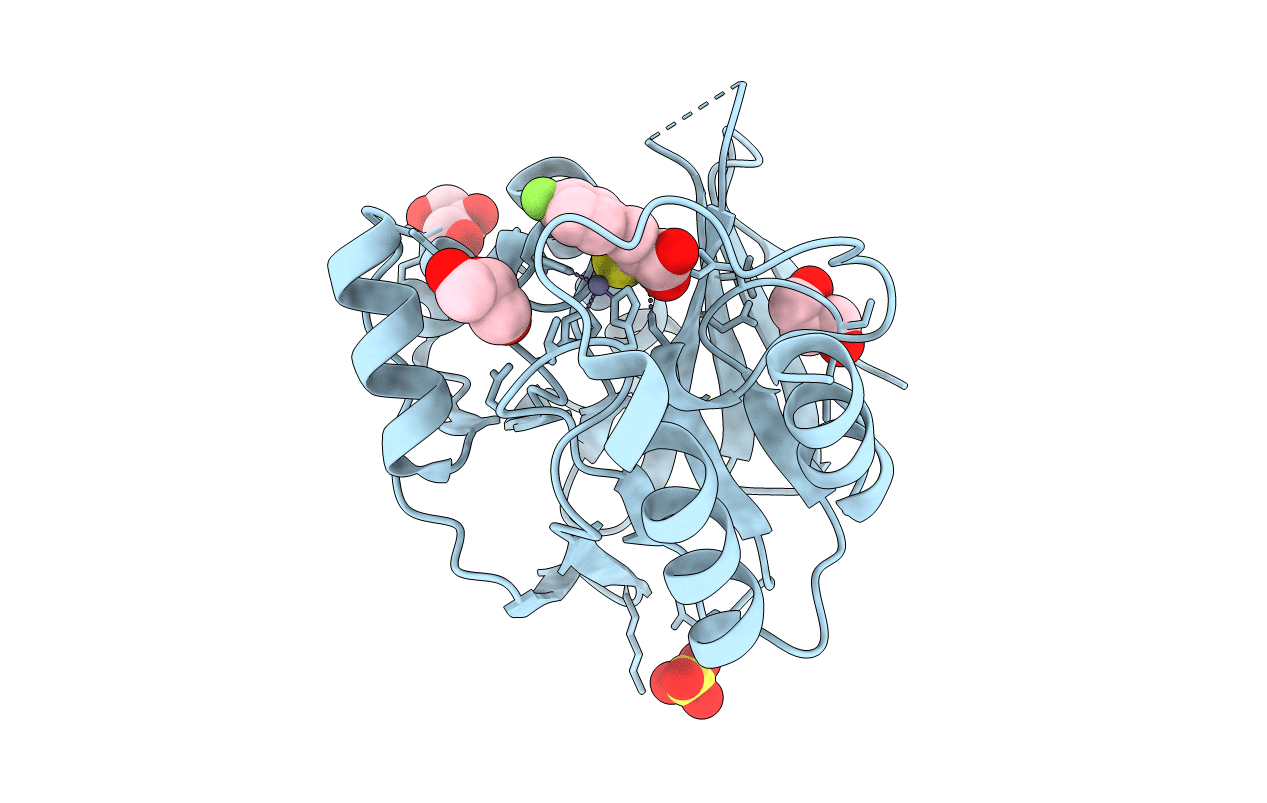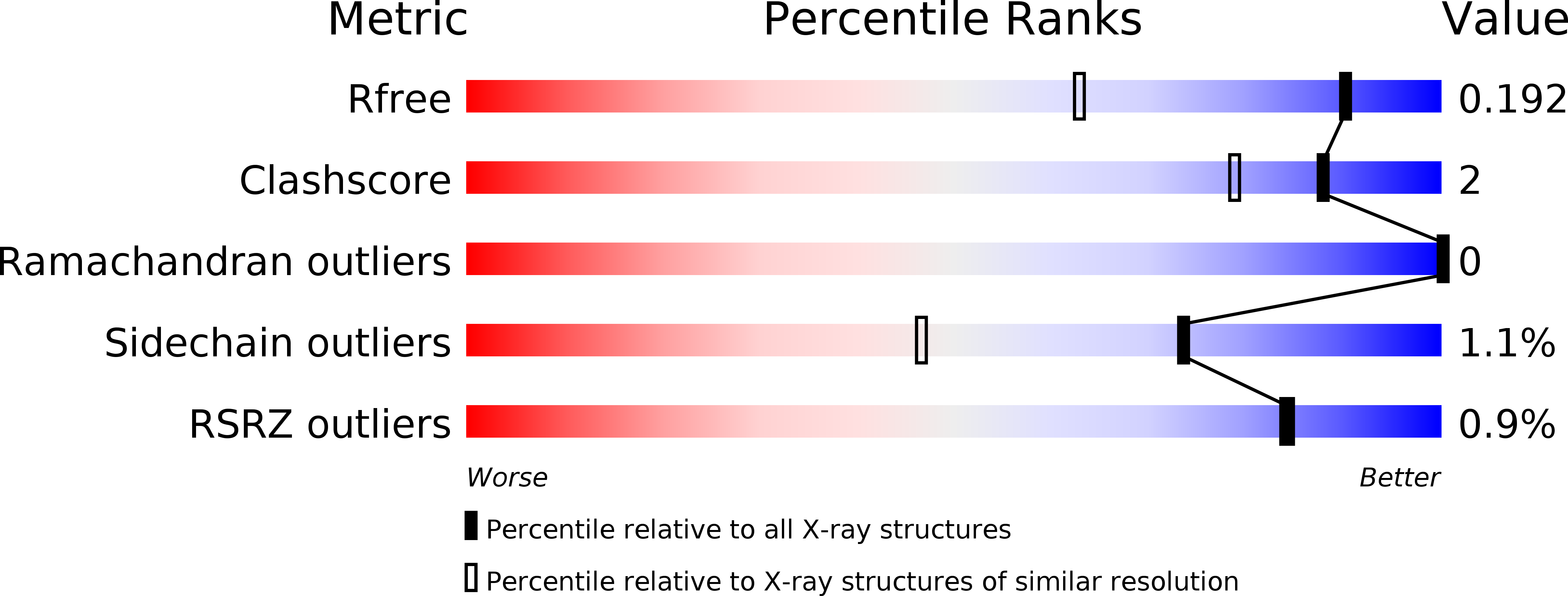
Deposition Date
2016-04-29
Release Date
2017-05-24
Last Version Date
2024-01-10
Entry Detail
PDB ID:
5JMX
Keywords:
Title:
Crystal Structure of BcII metallo-beta-lactamase in complex with DZ-305
Biological Source:
Source Organism:
Bacillus cereus (Taxon ID: 1396)
Host Organism:
Method Details:
Experimental Method:
Resolution:
1.44 Å
R-Value Free:
0.18
R-Value Work:
0.14
R-Value Observed:
0.14
Space Group:
C 1 2 1


